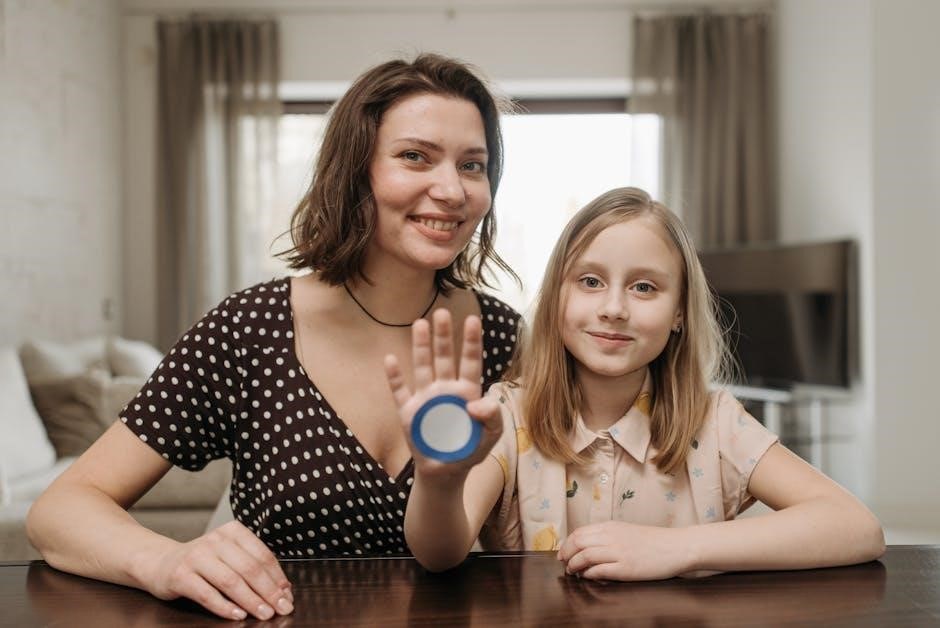Overview of The Circle Movie
The Circle is a 2017 techno-thriller directed by James Ponsoldt, based on Dave Eggers’ novel; Starring Emma Watson and Tom Hanks, it explores a powerful tech company’s impact on privacy and ethics, offering a timely, thought-provoking commentary on our tech-obsessed world.
1.1 Plot Summary
The Circle follows Mae Holland (Emma Watson), a young woman who lands a job at a powerful tech company called The Circle, founded by the charismatic Eamon Bailey (Tom Hanks). Initially thrilled by the opportunity, Mae quickly rises through the ranks and is invited to participate in a groundbreaking experiment that pushes the boundaries of privacy and ethics. As Mae becomes more deeply embedded in the company, her decisions begin to impact not only her own life but also the lives of those around her, including her family and friends. The film explores themes of surveillance, accountability, and the consequences of unchecked technological advancement, all while maintaining a tense, thought-provoking narrative. Mae’s journey raises questions about the cost of ambition and the importance of personal freedom in a world dominated by technology.
1.2 Main Characters and Cast
The Circle features a talented ensemble cast, with Emma Watson starring as Mae Holland, a young woman who joins the tech giant and becomes entangled in its ethical dilemmas. Tom Hanks plays Eamon Bailey, the charismatic and visionary founder of The Circle, whose true motives are gradually revealed. John Boyega portrays Ty Gault, a mysterious and reserved colleague whose secrets play a crucial role in the story. Karen Gillan stars as Annie Allerton, Mae’s enthusiastic and competitive friend at the company, while Patton Oswalt and Ellar Coltrane also appear in supporting roles. The cast brings depth and nuance to the film, exploring the complexities of their characters as they navigate the implications of their work at The Circle. The chemistry between the actors enhances the tension and moral ambiguity central to the plot.

Age Appropriateness Guide for Parents
The Circle is rated PG-13 for brief strong language, a sexual situation, and thematic elements. Suitable for mature teenagers and young adults exploring tech and privacy themes.
2.1 PG-13 Rating Explanation

The Circle is rated PG-13 by the MPAA for a sexual situation, brief strong language, and some thematic elements, including drug use. Violence is mild, with scenes like a truck chase and a character in peril. Language includes about 2 F-words and other scatological terms, which may concern some parents. A brief, non-graphic sex scene involves Mae’s parents, adding to the mature themes. The film explores privacy, surveillance, and ethical issues, making it more suitable for older teens and young adults. While not overly explicit, the content warrants parental discretion for younger or sensitive viewers.
2.2 Recommended Age for Viewers

The Circle is rated PG-13, making it suitable for viewers aged 13 and above. Mature teenagers, particularly those familiar with tech-related themes, may benefit from its exploration of privacy and ethics. However, parental discretion is advised due to mild violence, brief strong language, and a non-graphic sexual situation. Younger teens may find the film’s concepts complex but thought-provoking. The movie’s themes of surveillance and personal freedom are more appropriate for older teenagers who can grasp the implications. While not excessively explicit, the content suggests that viewers under 13 should watch with adult guidance to address any questions or concerns about the material.

Content Warnings for Parents
The Circle contains mild violence, brief strong language, and a non-graphic sexual situation. Themes of surveillance and ethical dilemmas may require parental guidance for younger viewers.
3.1 Violence and Gore
The Circle includes scenes of mild violence and peril, such as a car crash and a violent truck chase ending in a fatal accident. A character is also shown struggling in a kayak during a storm, and there’s an offscreen death. While these moments are intense, they are not overly graphic or gory. The film focuses more on suspense and moral dilemmas rather than explicit violence. However, the truck chase and its consequences may be unsettling for younger or sensitive viewers. Additionally, a man is chased by a mob using smartphones and drones, adding to the tension. Despite the lack of excessive gore, the emotional weight of these scenes could still be disturbing for some audiences. Parents should consider their child’s sensitivity to such content when deciding if the film is appropriate. The violence is moderate but not gratuitous, aligning with the film’s PG-13 rating.
3.2 Sexual Content and Nudity

The Circle contains minimal sexual content, primarily limited to brief, non-graphic scenes. A mild sexual situation involving the main character’s parents is shown, but it is not explicit or prolonged; There is no nudity in the film, and any romantic interactions are subtle. The focus remains on the story’s themes rather than exploiting sexual content. While the PG-13 rating includes a sexual situation, it is handled discreetly and does not dominate the narrative. Parents should be aware of these moments but can consider the film appropriate for mature teenagers, as the content is not overly explicit or suggestive. The emphasis on ethical dilemmas and privacy overshadows any minor sexual references, making the film more about its thematic elements than adult content.
3.3 Language and Profanity

The Circle includes some strong language and profanity, contributing to its PG-13 rating. There are instances of brief strong language, including the use of the F-word and other scatological terms. These moments are scattered throughout the film but are not excessively frequent. The language is often used in contexts of stress, frustration, or casual conversation among characters. While it may not be suitable for younger audiences, the film does not rely heavily on profanity to drive its narrative. Parents should be cautious if their teenagers are sensitive to such language. However, the thematic focus on privacy and ethics remains the film’s central concern, with language playing a secondary role in character development and dialogue. The overall impact of the language is moderate and aligns with the film’s mature themes.

Thematic Elements to Consider
The Circle explores themes of privacy, surveillance, and ethical dilemmas in technology, highlighting the tension between innovation and personal freedom. These ideas provoke reflection on modern tech’s dual impact.
4.1 Privacy and Surveillance Themes

The Circle delves deeply into privacy and surveillance, critiquing a tech giant’s invasive practices. The film portrays a company that monitors its employees and users relentlessly, blurring the lines between security and exploitation. Mae’s journey highlights the loss of personal autonomy as she becomes entangled in a system that values transparency over individual privacy. The movie serves as a cautionary tale about the dangers of unchecked technological advancement and the ethical implications of mass surveillance. Parents should be aware that these themes may prompt discussions about the balance between innovation and personal freedom, making it essential to guide younger viewers in understanding the consequences of sharing intimate details in a hyper-connected world.

4.2 Ethical Issues in Technology
The Circle raises significant ethical concerns about technology, focusing on how innovation can be misused for control and manipulation. The film portrays a tech giant that prioritizes profit and power over ethical considerations, exploiting personal data and privacy. Mae’s journey reveals the moral dilemmas of a company that justifies surveillance under the guise of transparency and progress. The movie critiques the unchecked growth of technology and its potential to erode individual freedoms. Parents should be aware that these themes may encourage discussions about the responsible use of technology and the importance of accountability in tech industries. The film serves as a cautionary tale, urging viewers to reflect on the ethical implications of their digital footprints and the consequences of sacrificing privacy for convenience.



